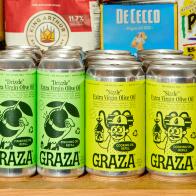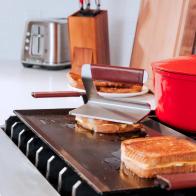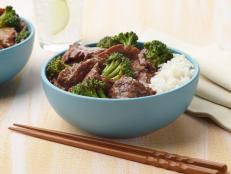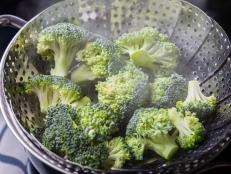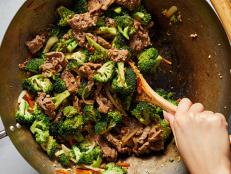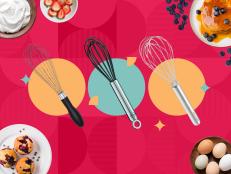What Home Bakers Should Know Before Putting Fresh Flowers on Cake
Three pastry professionals share how to safely decorate with fresh blooms.
Fresh flowers aren’t just for appreciating outdoors or keeping in a vase at home. They also make for bright, beautiful cake decorations, and Instagram is teeming with talented pastry chefs and bakers who use blooms and botanicals to add pop, flair and elegance to their creations. Fortunately, you don’t need to be a professional chef to try your hand at floral art, but you may not know exactly where to begin. Can I just pick any flower from the grocery store or my garden? How far in advance do I top the cake? Is this even sanitary?
Before you snip just any random flower to grace your cake, check out these important tips from three pastry professionals and cake experts — you’ll learn which blooms are safe to use, what to look for when purchasing them and how to prepare them for topping. And if you’re not a (fresh) flower person, read on: there are plenty of creative, visually appealing options in store for you as well.
Use Edible Flowers — And Do Your Research First
As pleasing as most flowers are to the eye, not all of them are suitable for use on food, and some are even poisonous. “Don't assume based off the name of the plant that it’s edible,” Bronwen Wyatt, Chef-Owner of Bayou Saint Cake, warns. “Do lots of research, and never use a plant if you don't know what it is.” Registered dietitian and nutrition expert Toby Amidor advises sticking to edible flowers to avoid any ill health effects. “If you use a toxic flower and it touches the surface of the cake, remnants from the flower will be on the cake and can potentially make you sick.”
Steer clear of toxic varieties like hydrangeas, hyacinths, daffodils and calla lilies, and opt for edible blooms instead — marigolds, pansies, violets and peonies are a few that fit the bill. Always do your research beforehand and pay attention to the sub-species of bloom you’re looking to use.
Buy Unsprayed Blooms from Reputable Sources
Where your flowers come from (and how they were grown) matters — more than you may think. “If at all possible,” Penny Stankiewicz, Owner and Creative Director of Sugar Couture says, “purchase blooms to use on cakes that are grown organically without pesticides.” That means passing on commercial flowers found at the grocery store (most of which contain pesticides and chemicals) and heading to your local farmer’s market, where you can directly ask about how the flowers were grown.
Reputable online purveyors are another option, or you can try growing your own flowers—Wyatt recommends low-maintenance varieties like sunflowers, nasturtiums and bachelor’s buttons. Above all, resist the urge to pluck any random bloom that you see. “Do not pick flowers from outside to put on your cake,” Amidor cautions. “Source edible flowers from a reputable supplier who you trust.”
Clean, Snip, Top
Once you’ve ensured your flowers are safe to use and pesticide-free, make sure to clean them thoroughly before decorating your cake. After carefully washing the blooms, snip away most of the stem and remove any small insects with a toothpick. Although completely non-toxic, edible flowers with a woody, hardy stem can technically be placed into the cake. “If the stem is juicy (as is the case with zinnias) or a little hairy (like with sunflowers), I'll pipe a little mound of buttercream and gently press the flower onto that,” Wyatt explains. If you prefer to avoid flowers having direct contact with the cake surface, wrap the stems first with floral tape.
When arranging the flowers on your cake, consider playing around with different textures and sizes for aesthetic appeal. “You want to have the flowers share a color palette, but you also want a bit of diversity in height and texture,” suggests Genevieve Yam, a personal chef who often uses fresh flowers on her cakes. “I like using something that will give me height in one part of the cake, and then smaller blooms elsewhere.” However you choose to decorate, try to top your cake as close to serving time as possible to preserve the flowers’ freshness and beauty.
Finally, Get Creative with Alternatives
If using fresh flowers is not your cup of tea (or piece of cake), there are plenty of innovative, visually striking alternatives out there. Sugar cake flowers are easy to order online, hassle-free and “can actually be a keepsake held over years,” Stankiewicz says. Another option is dried or preserved flowers, like violet, hibiscus and rose, which are delicate but have more staying power than their fresh counterparts.
If you’re looking to venture beyond standard flowers, non-allium herbs and some vegetables make for creative, playful alternatives. “Top a cake with pretty baby carrots with the tops on from the farmer’s market, or any fun vegetable that isn’t a garlic or onion,” Wyatt suggests. “Sometimes vegetables like peas have beautiful shoots and blossoms,” Yam adds. “I’ve also used herbs and plants like basil, lemon verbena [and] anise hyssop.” The bottom line: choose your botanical decorations based on the aesthetic look you’re going for, and you’re bound to end up with a stunning, photo-worthy cake.
Related Content:












